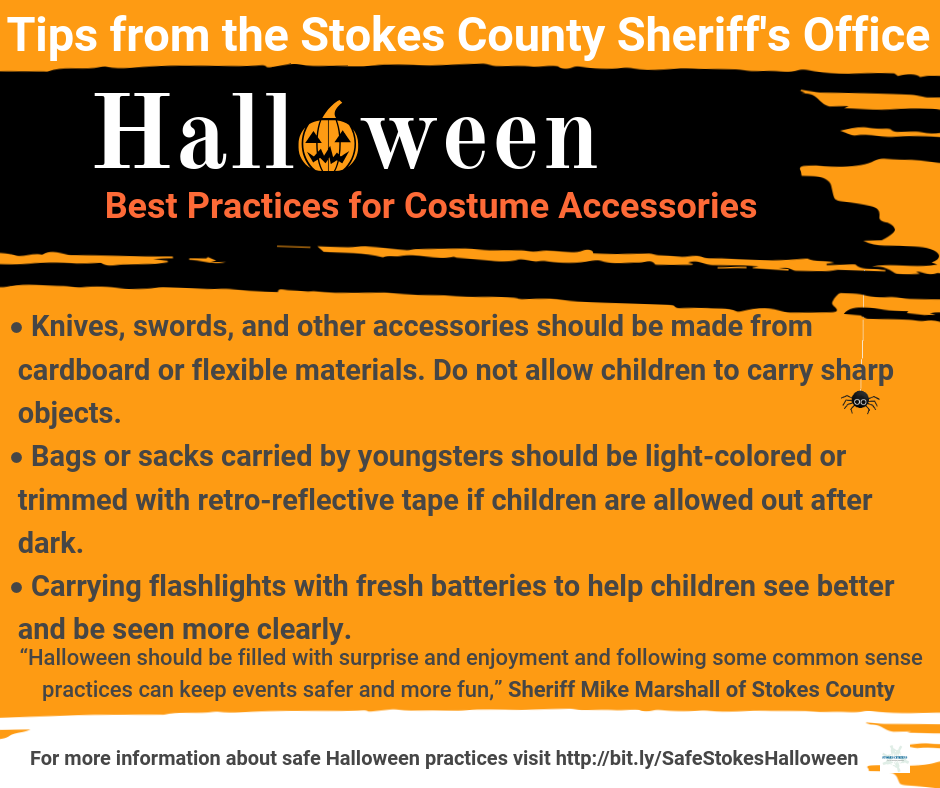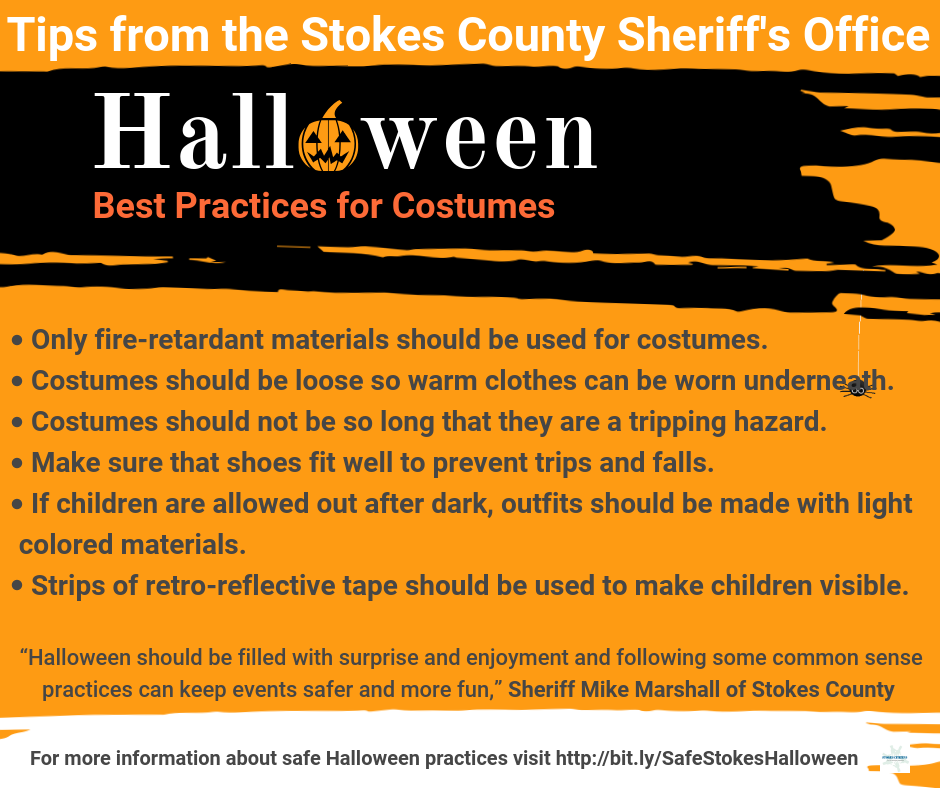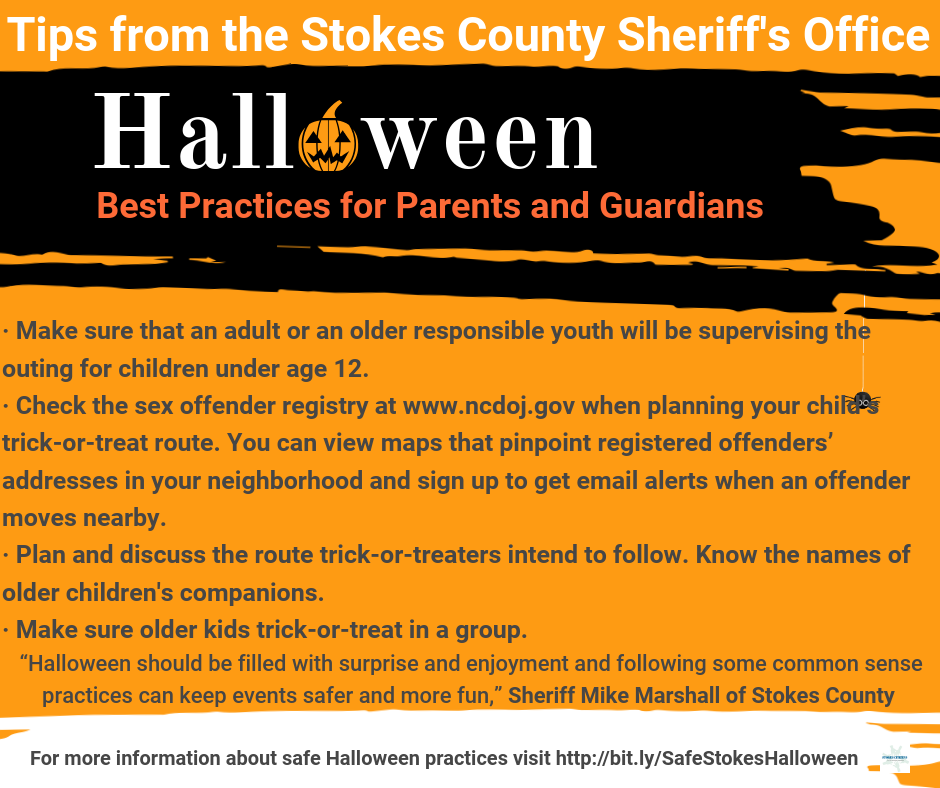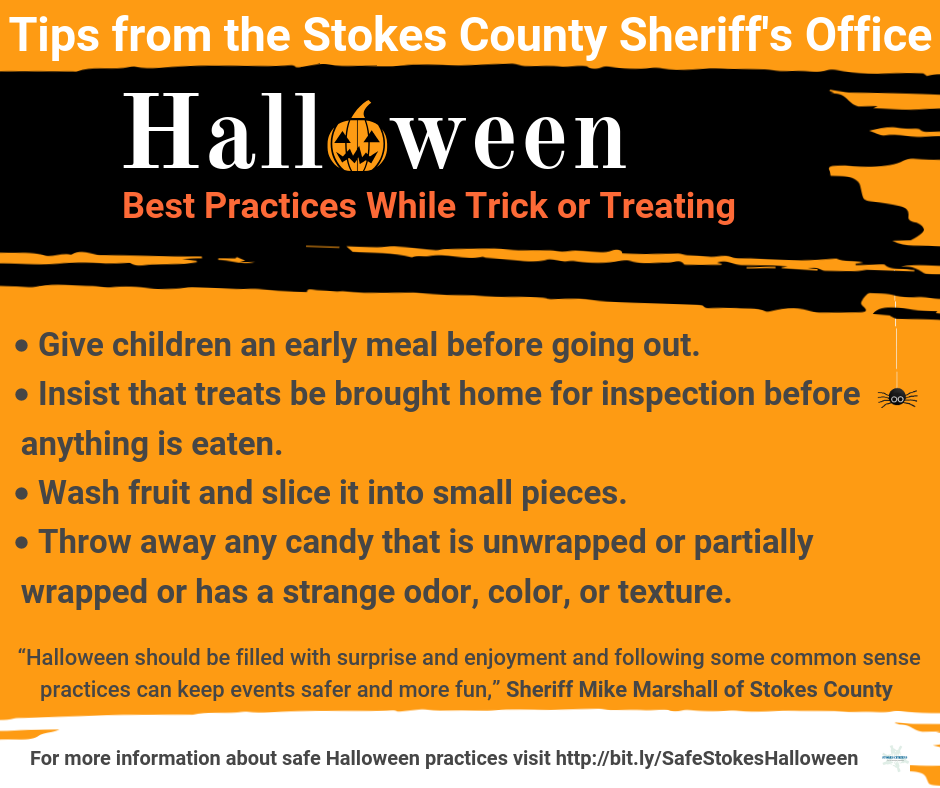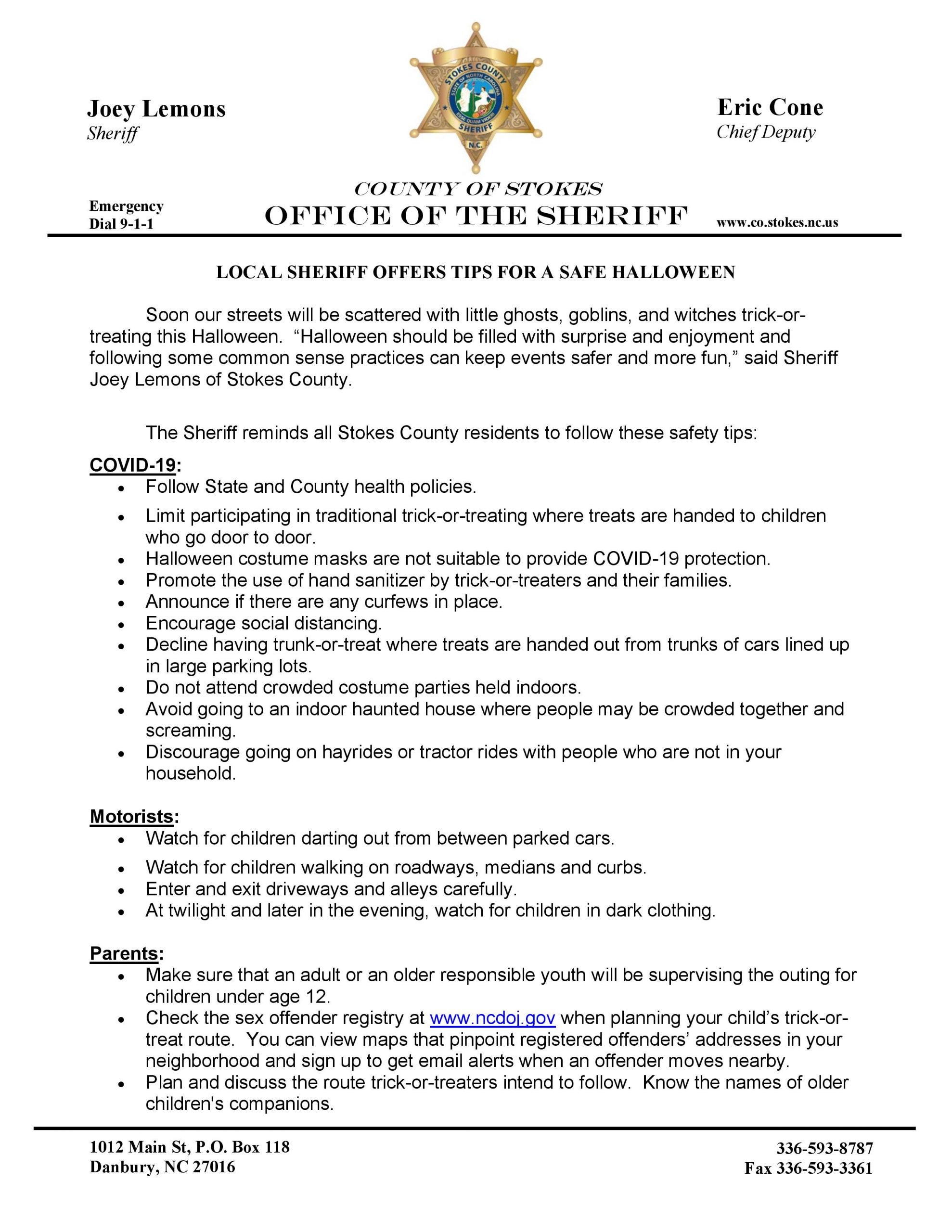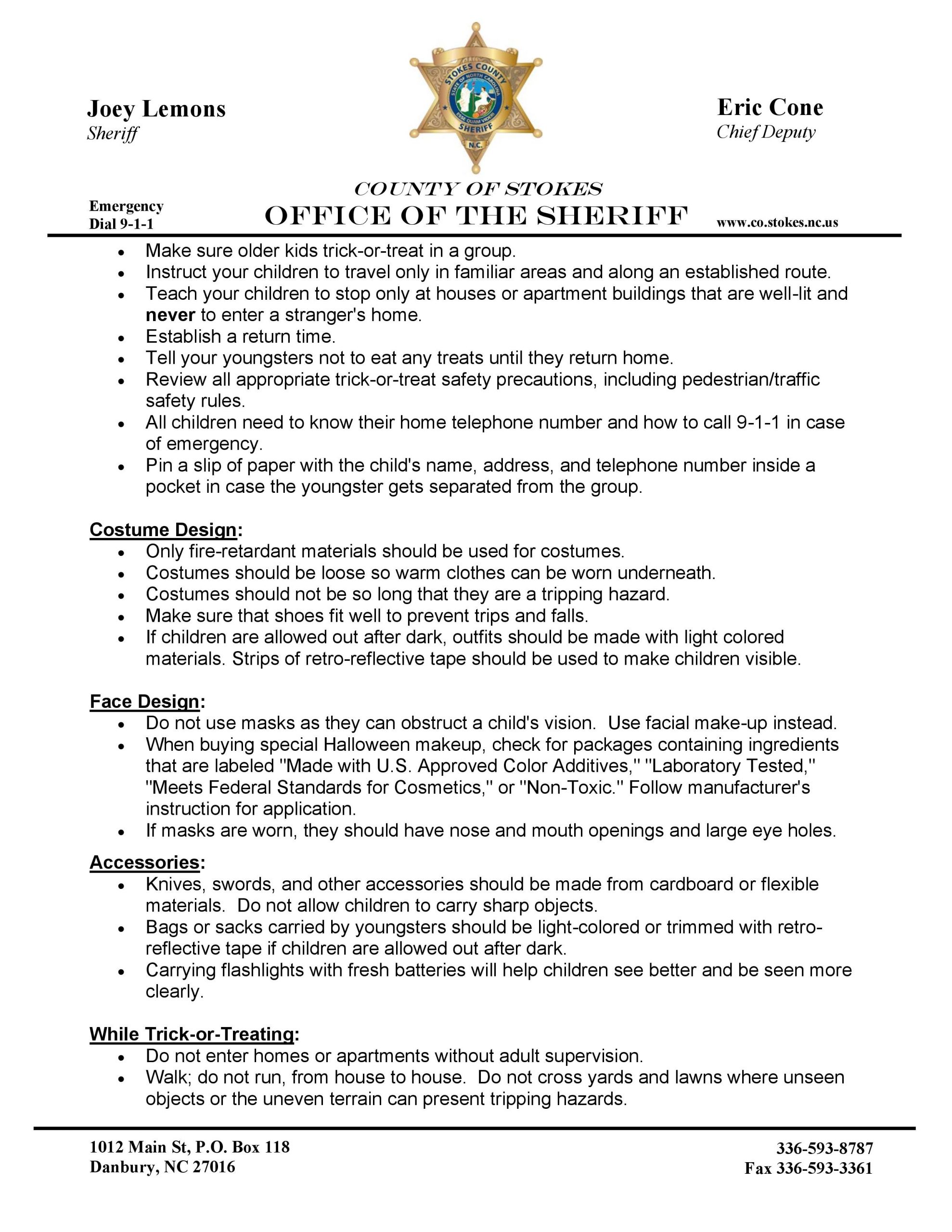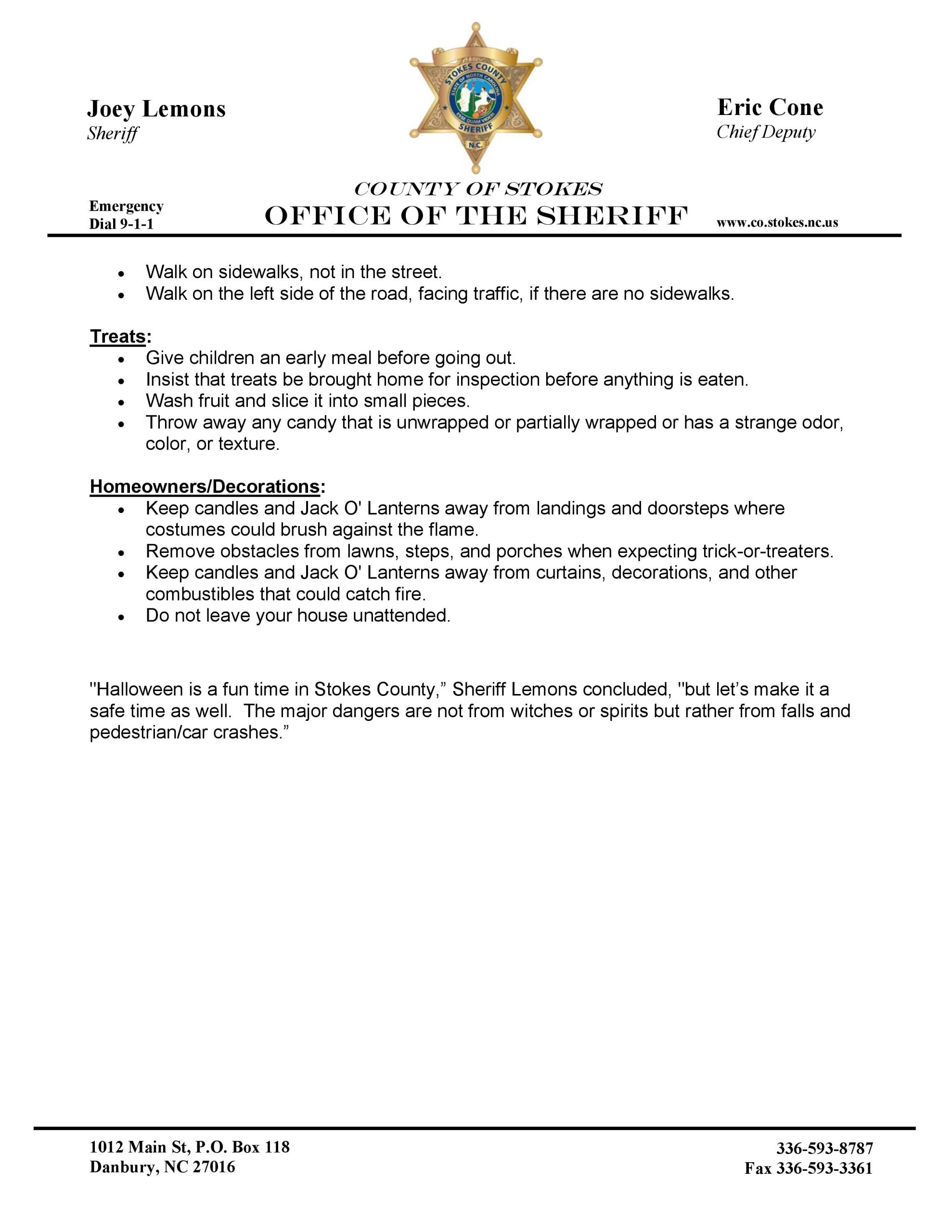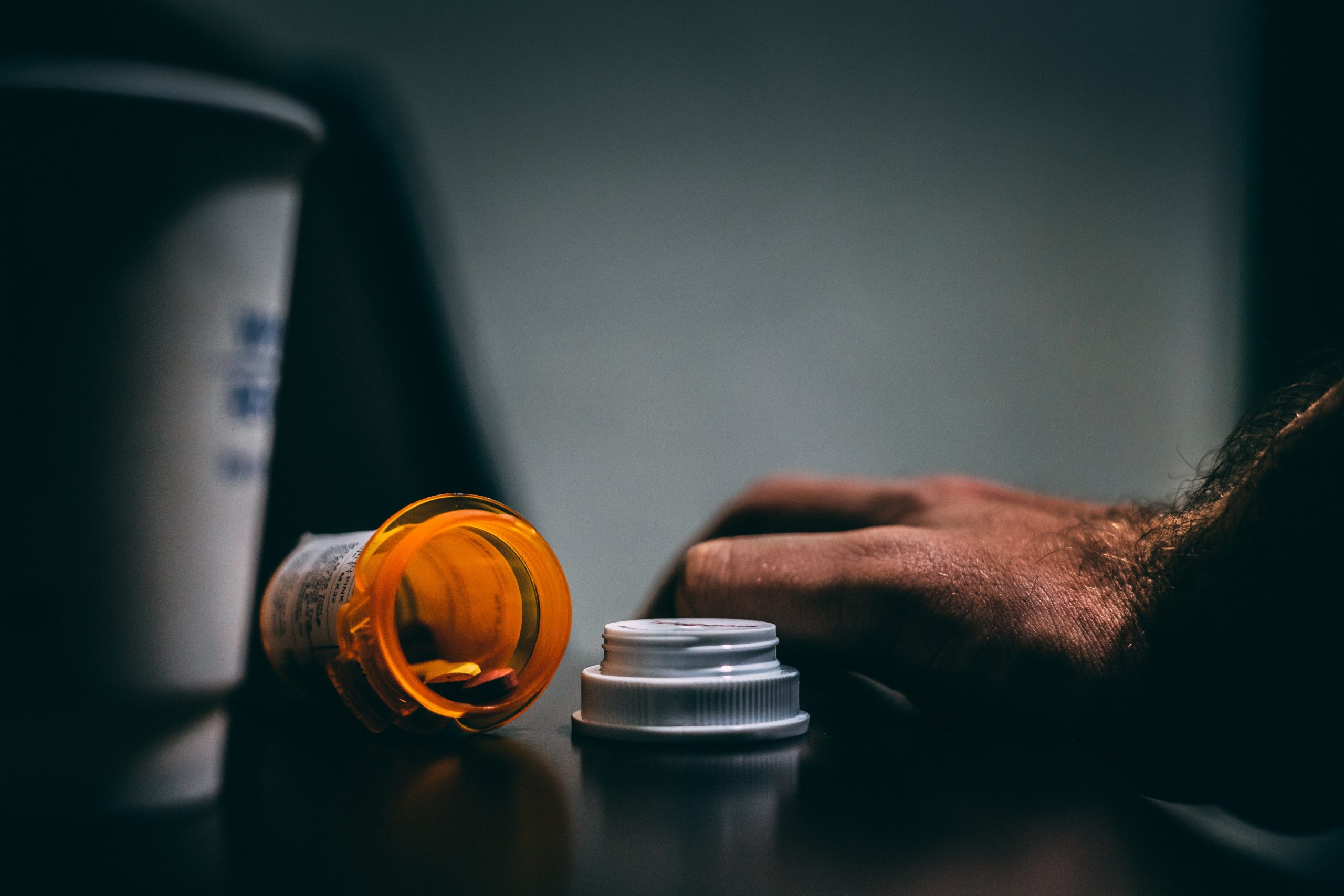Official Announcement: Stokes County Sheriff’s Office Halloween Tips
October is National Medicine Abuse Awareness Month
October is National Medicine Abuse Awareness Month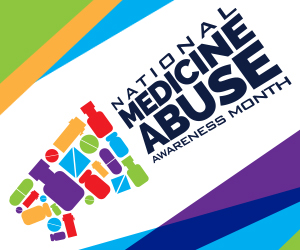
Parents: did you know that 1 in 30 youth ages 12 through 17 has misused cough medicine to get high from its dextromethorphan ingredient?
Over-the-counter cough medicine can have negative outcomes if misused. Securely store and monitor cough medicine in the home to prevent misuse.
We encourage parents, guardians and caregivers of youth to secure and monitor both prescription and over-the-counter medications.
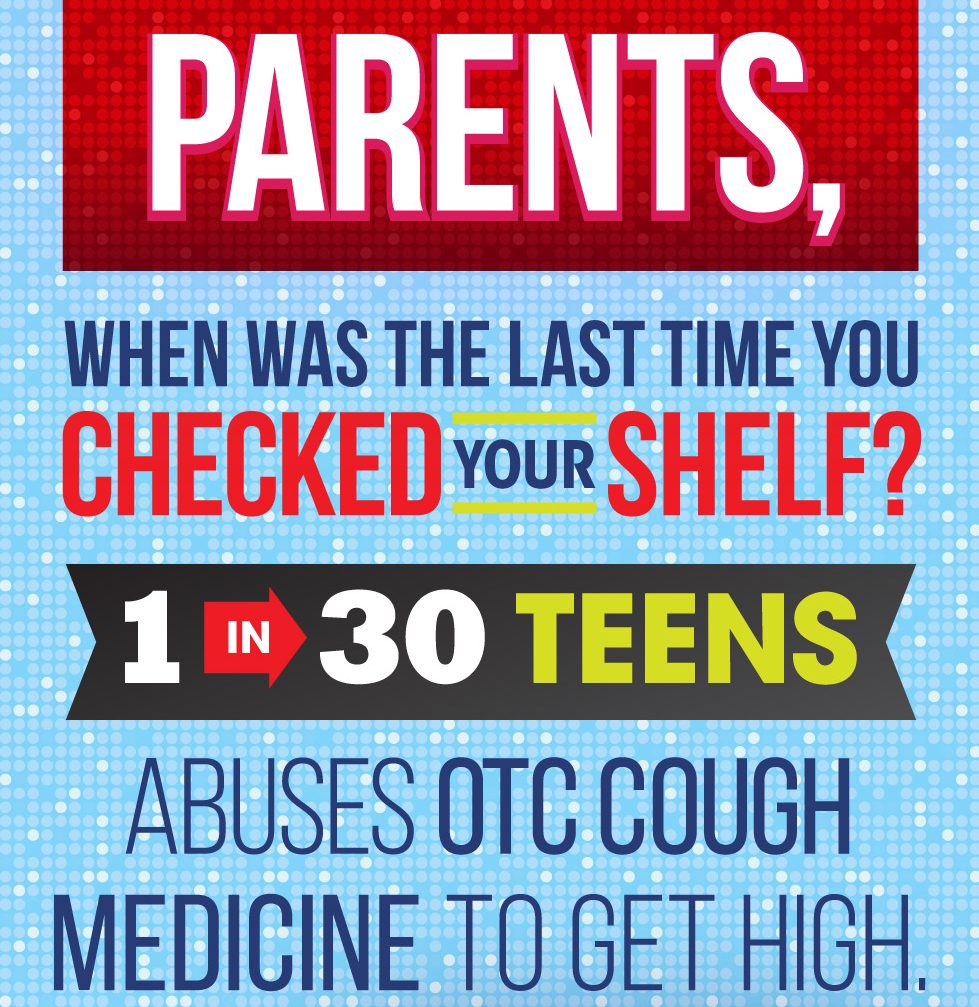
Parents/guardians are encouraged to review the labels on medications in their medicine cabinets
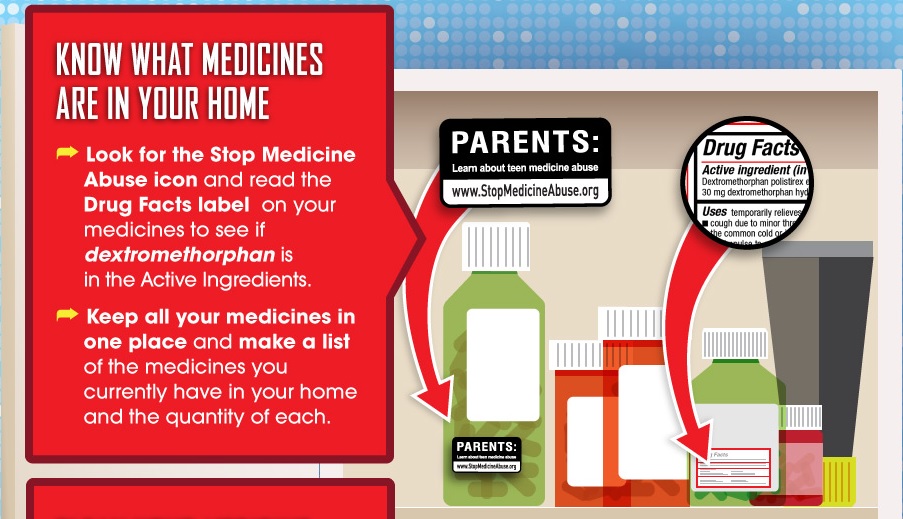
http://www.stopmedicineabuse.org
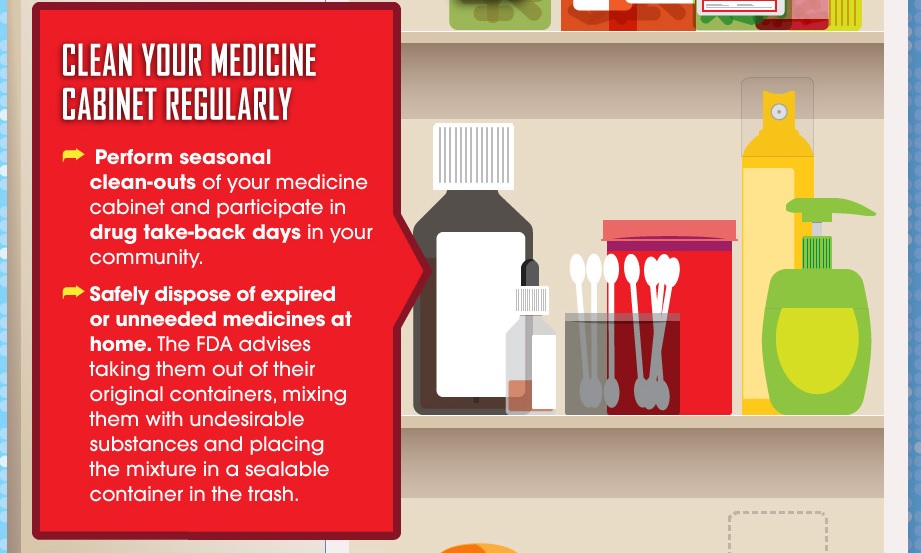
Make sure you are doing your part to keep your community safe by securing all medications in the home and disposing of medications properly.
We encourage parents and guardians to know the slang terms that are used to describe cough syrup misuse

Pet owners: did you know that the medication the veterinarian prescribed for your pet can be misused by people trying to get high?
Make sure that all medications, for both humans and animals, are securely stored out of sight and out of reach.

COVID19: Increased Alcohol Sales and Consumption
Information contained in this post are from National Public Radio and Journal of the American Medical Association
Alcohol and COVID19
Perhaps it’s no surprise, but people are drinking more during the pandemic. In some cases, by a lot.

Instances of heavy drinking among women, which for women was defined as four or more drinks within a couple of hours, spiked by 41%.
The study’s participants were aged 30 to 80, so the report does not offer insight on the pandemic drinking habits of younger adults.
The study took a sample of 1,540 adults and compared their self-reported drinking habits this spring with a year prior.
A quick look at social media suggests many people are using alcohol as a way to relax. Whether it’s “quarantinis” or Zoom happy hours, Americans seem to find a plethora of reasons to drink during the pandemic.
And as people began going to bars less, retail alcohol sales went up.
Stores sold 54% more alcohol in late March compared the year prior, according to Nielsen. Online sales more than doubled. 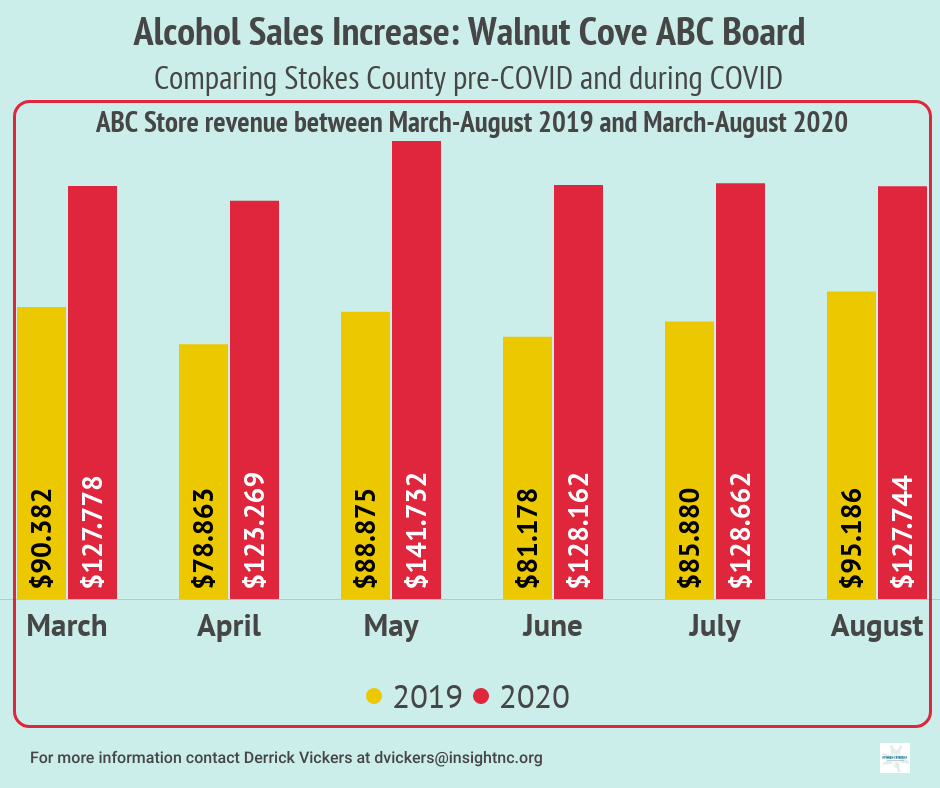
Some states like New York, Florida and Texas relaxed laws during the pandemic to allow expanded alcohol delivery.
The study used data collected using the RAND Corporation American Life Panel. The authors note a limitation of the study: its findings are based on self-reported data that could be skewed due to societal expectations. Nonetheless, they concluded more research could be warranted on alcohol use and its psychological and physical effects during the pandemic.
Earlier this year, the World Health Organization European office warned against excessive drinking and even said access should be limited during the pandemic.
Drinking may be even more dangerous now as it can negatively affect the body’s immune system, according to the WHO warning.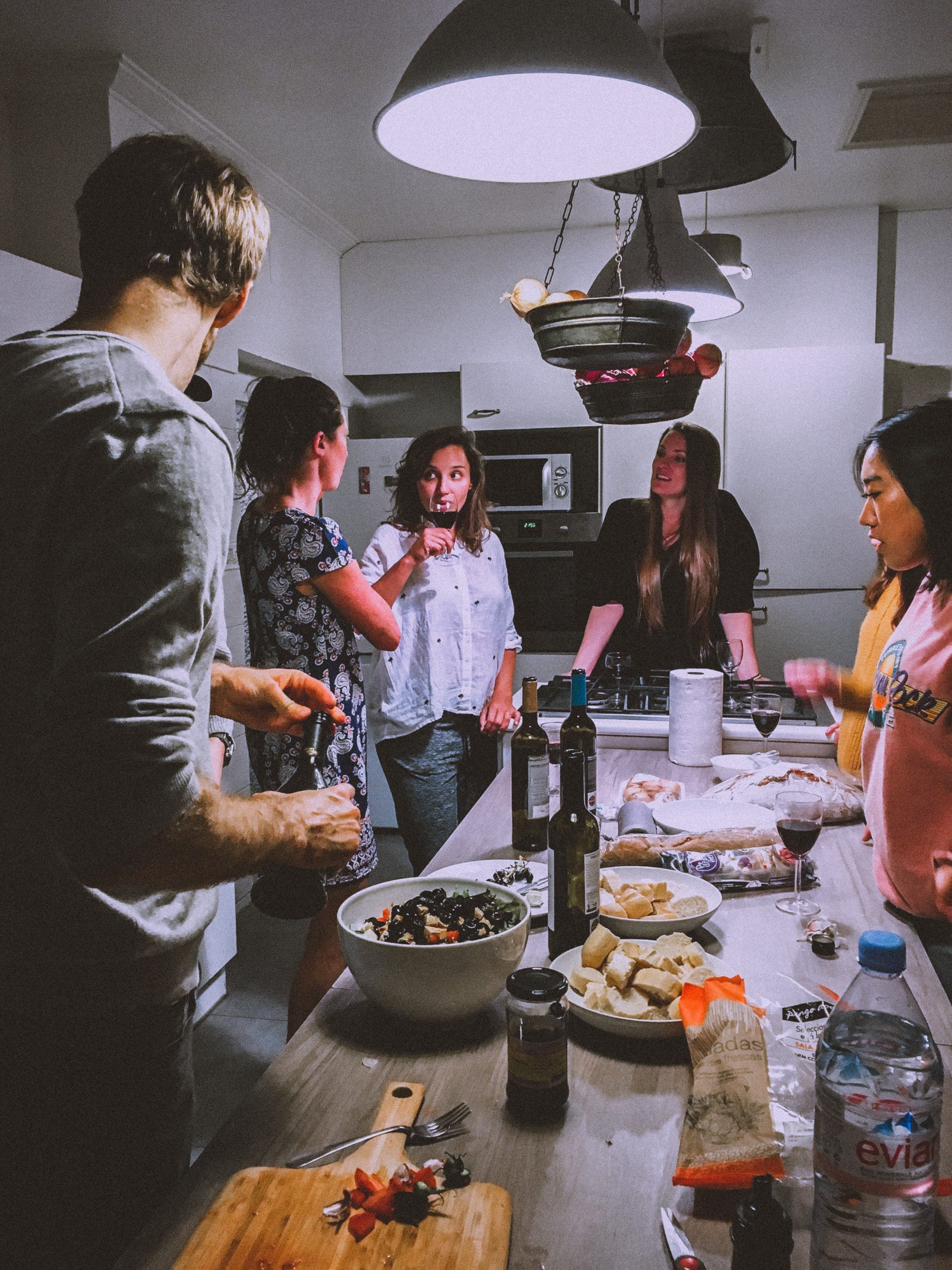
“Alcohol compromises the body’s immune system and increases the risk of adverse health outcomes,” the WHO stated. “Therefore, people should minimize their alcohol consumption at any time, and particularly during the COVID-19 pandemic.”
We encourage appropriate consumption of alcohol by adults. Avoid excessive alcohol use in front of youth. Monitor and secure alcohol if it is in the home. For further information about consumption of alcohol by adults please visit https://www.niaaa.nih.gov/alcohol-health/overview-alcohol-consumption/alcohol-use-disorders
Rx and OTC Misuse Talking Points for Parents/Caregivers of Youth
October is National Medicine Abuse Awareness Month
 Parents and adult caregivers need to be educated about this problem, as well as their role in preventing it.
Parents and adult caregivers need to be educated about this problem, as well as their role in preventing it.
Below are important things to consider.
- Watch for behavioral and physical symptoms of abuse by youth.
- Irritability, skipping school/work/clubs or activities, communication withdrawal from adults and peers, weight loss, dialated pupils.
- Click here for more information about signs and symptoms of medication misuse.
- Check for signs of Rx medications that do not belong in their teens’ rooms.
- Prescription bottles with no labels, loose pills, pills in a plastic bag, pills that are assorted sizes/colors/shapes.
- Talk with other parents and share information.
- Talk with their teens and grandchildren to dispel the belief that Rx drugs can be safely abused.
- Safeguard your medications.
- Lock up your meds.
- Keep track of medication quantities.
- Properly dispose of medications if they are no longer needed.
Talking points for parents and adult caregivers when talking to youth about substance use
Preschool to Age 7
Before you get nervous about talking to young kids, take heart. You’ve probably already laid the groundwork for a discussion. For instance, whenever you give a fever medicine or an antibiotic to your child, you can discuss why and when these medicines should be given. This is also a time when your child is likely to pay attention to your behavior and guidance.
Take advantage of “teachable moments” now. If you see a character in a movie or on TV with a cigarette, talk about smoking, nicotine addiction, and what smoking does to a person’s body. This can lead into a discussion about other drugs and how they could cause harm.
Keep the tone of these discussions calm and use terms that your child can understand. Be specific about the effects of the drugs: how they make a person feel, the risk of overdose, and the other long-term damage they can cause. To give your kids these facts, you might have to do a little research.

Ages 8 to 12
As your kids grow older, you can begin talks with them by asking them what they think about drugs. By asking the questions in a nonjudgmental, open-ended way, you’re more likely to get an honest response.
Remember to show your kids that you’re listening and really paying attention to their concerns and questions.
Kids this age usually are still willing to talk openly to their parents about touchy subjects. Starting a dialogue now helps keep the door open as kids get older and are less inclined to share their thoughts and feelings.
Even if your questions don’t immediately result in a discussion, you’ll get your kids thinking about the issue. Show them that you’re willing to discuss the topic and hear what they have to say. Then, they might be more willing to come to you for help in the future.
News, such as steroid use in professional sports, can be springboards for casual conversations about current events. Use these discussions to give your kids information about the risks of drugs.

Ages 13 to 17
Kids this age are likely to know other kids who use alcohol or drugs, and to have friends who drive. Many are still willing to express their thoughts or concerns with parents about it. They may ask you more specific questions about drugs.
Use these conversations not only to understand your child’s thoughts and feelings, but also to talk about the dangers of driving under the influence of drugs or alcohol. Talk about the legal issues — jail time and fines — and the possibility that they or someone else might be killed or seriously injured.
Consider making a written or verbal contract on the rules about going out or using the car. You can promise to pick your kids up at any time (even 2 a.m.!), no questions asked, if they call you when the person responsible for driving has been drinking or using drugs.
The contract also can detail other situations: For example, if you find out that someone drank or used drugs in your car while your son or daughter was behind the wheel, you may want to suspend driving privileges for 6 months. By discussing all of this with your kids from the start, you eliminate surprises and make your expectations clear.

For any questions or concerns about substance use or mental health please reach out to us and we can direct you to get qualified and accurate information.
Kratom: What Parents and Community Members Should Know
A Comprehensive Look at Kratom
Currently not illegal AND sold in packaging that lists it is not for human consumption, but that isn’t detering some youth from experimenting with kratom.
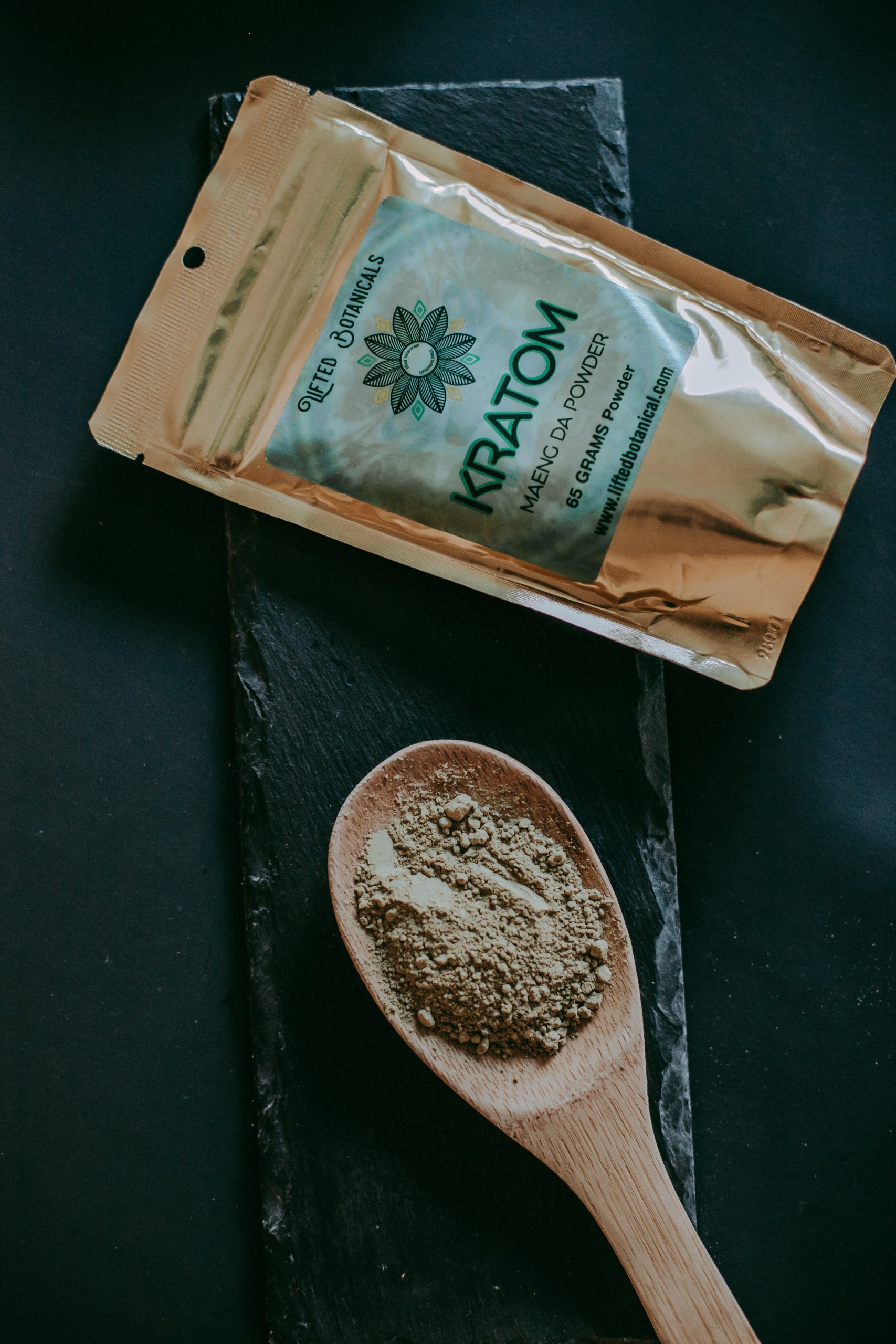
There is a new trend of drug experimentation that is impacting the youth in our communities and it’s called kratom.
Information contained below comes directly from National Institute on Drug Abuse and can be considered accurate and verified.
Kratom: What is it?
Kratom is a tropical tree (Mitragyna speciosa) native to Southeast Asia, with leaves that contain compounds that can have psychotropic (mind-altering) effects.
Kratom is not currently an illegal substance and has been easy to order on the internet. It is sometimes sold as a green powder in packets labeled “not for human consumption.” It is also sometimes sold as an extract or gum. Kratom sometimes goes by the following names:
- Biak
- Ketum
- Kakuam
- Ithang
- Thom
Kratom: How does it affect the brain?
Kratom can cause effects similar to both opioids and stimulants. Two compounds in kratom leaves, mitragynine and 7-α-hydroxymitragynine, interact with opioid receptors in the brain, producing sedation, pleasure, and decreased pain, especially when users consume large amounts of the plant. Mitragynine also interacts with other receptor systems in the brain to produce stimulant effects.
When kratom is taken in small amounts, users report increased energy, sociability, and alertness instead of sedation. However, kratom can also cause uncomfortable and sometimes dangerous side effects.
 Kratom: What are the health effects?
Kratom: What are the health effects?
Reported health effects of kratom use include:
- nausea
- itching
- sweating
- dry mouth
- constipation
- increased urination
- loss of appetite
- seizures
- hallucinations
Symptoms of psychosis have been reported in some users.
Kratom: Can a person overdose on it?
There have been multiple reports of deaths in people who had ingested kratom, but most have involved other substances. A 2019 paper analyzing data from the National Poison Data System found that between 2011-2017 there were 11 deaths associated with kratom exposure. Nine of the 11 deaths reported in this study involved kratom plus other drugs and medicines, such as diphenhydramine (an antihistamine), alcohol, caffeine, benzodiazepines, fentanyl, and cocaine. Two deaths were reported following exposure from kratom alone with no other reported substances.
In 2017, the FDA identified at least 44 deaths related to kratom, with at least one case investigated as possible use of pure kratom. The FDA reports note that many of the kratom-associated deaths appeared to have resulted from adulterated products or taking kratom with other potent substances, including illicit drugs, opioids, benzodiazepines, alcohol, gabapentin, and over-the-counter medications, such as cough syrup.
Also, there have been some reports of kratom packaged as dietary supplements or dietary ingredients that were laced with other compounds that caused deaths. People should check with their health care providers about the safety of mixing kratom with other medicines.
Kratom: Is it addictive?
Like other drugs with opioid-like effects, kratom might cause dependence, which means users will feel physical withdrawal symptoms when they stop taking the drug. Some users have reported becoming addicted to kratom. Withdrawal symptoms include:
- muscle aches
- insomnia
- irritability
- hostility
- aggression
- emotional changes
- runny nose
- jerky movements
Kratom: How is addiction treated?
There are no specific medical treatments for kratom addiction. Some people seeking treatment have found behavioral therapy to be helpful. Scientists need more research to determine how effective this treatment option is.
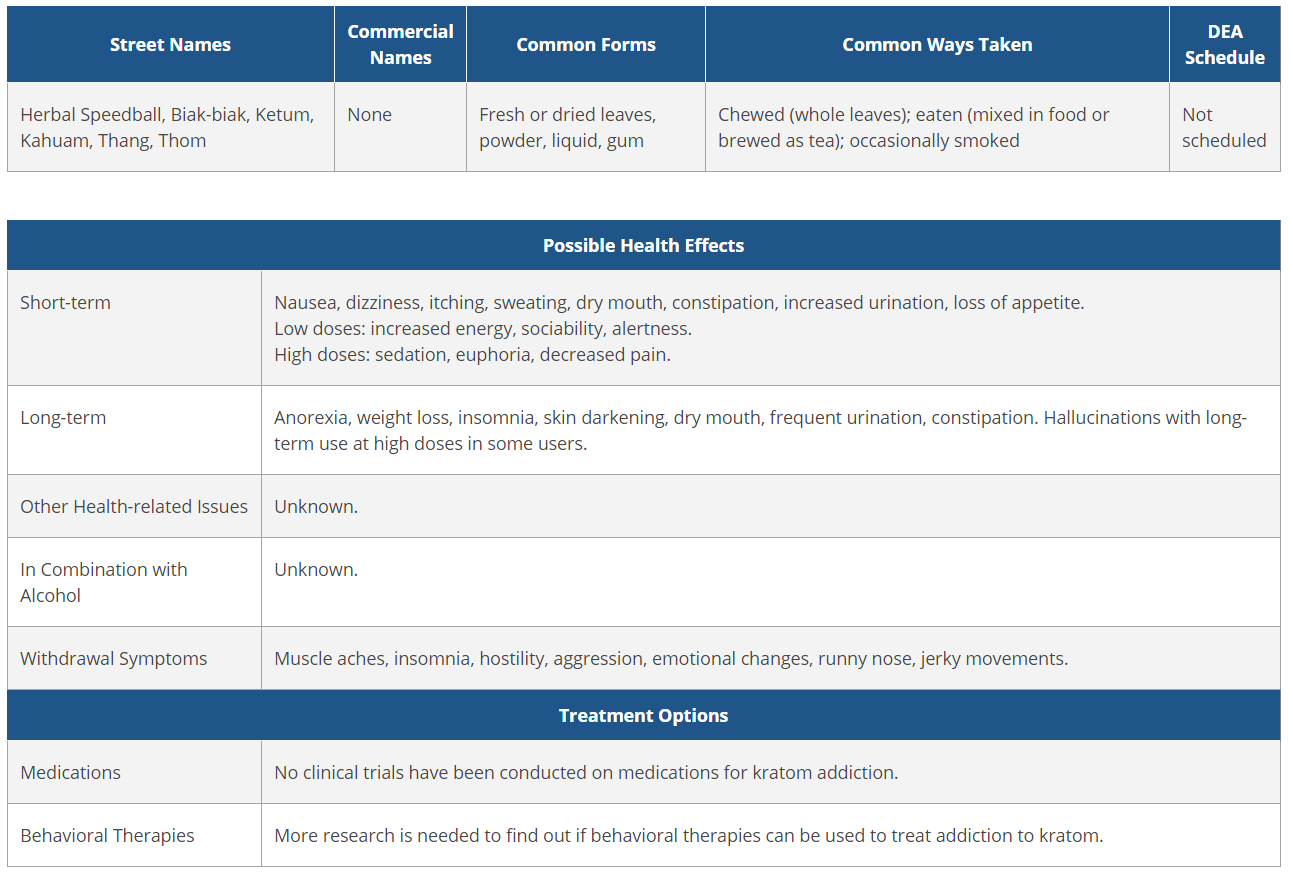
Kratom: Does it have any medicinal value?
In recent years, some people have used kratom as an herbal alternative to medical treatment in attempts to control withdrawal symptoms and cravings caused by addiction to opioids or to other addictive substances such as alcohol. There is no scientific evidence that kratom is effective or safe for this purpose; further research is needed.
For any questions or concerns about substance use or mental health please reach out to us and we can direct you to get qualified and accurate information.
WIC During COVID19
An open message from Micki McKnight, WIC Director for Stokes County Health Department
WIC During COVID19
As you may recall, part of the USDA’s response to COVID-19 was to allow automatic issuance of the Special Supplemental Nutrition Program for Women, Infants, and Children (WIC) to ensure that beneficiaries do not have to attend in-person WIC clinic appointments in order to receive their monthly food benefit allowance.
However, of the more than 248,000 people who receive WIC in North Carolina, more than 132,000 did not utilize their full food benefits in June 2020.
In response, NCDHHS is working to spread the message to current WIC participants that:
1) WIC benefits are being added directly to their eWIC account on their family issue date.
2) WIC allowances do not roll over, so any balance that is not spent is lost.
3) Enabling notifications on the Bnft® App is the best way receive real-time eWIC updates.
4) WIC clinics are open and ready to serve, even if hours or locations have changed due to COVID-19.

Stokes has two WIC offices
Stokes County Health Department
1009 N. Main St.
Danbury, NC 27016
336-593-2402
Southwest Service Center
104 Hartgrove Rd.
King, NC 27021
336-985-2727
The digital flyer below provides more information for WIC participants about auto-issuance and using their food benefits during COVID-19.
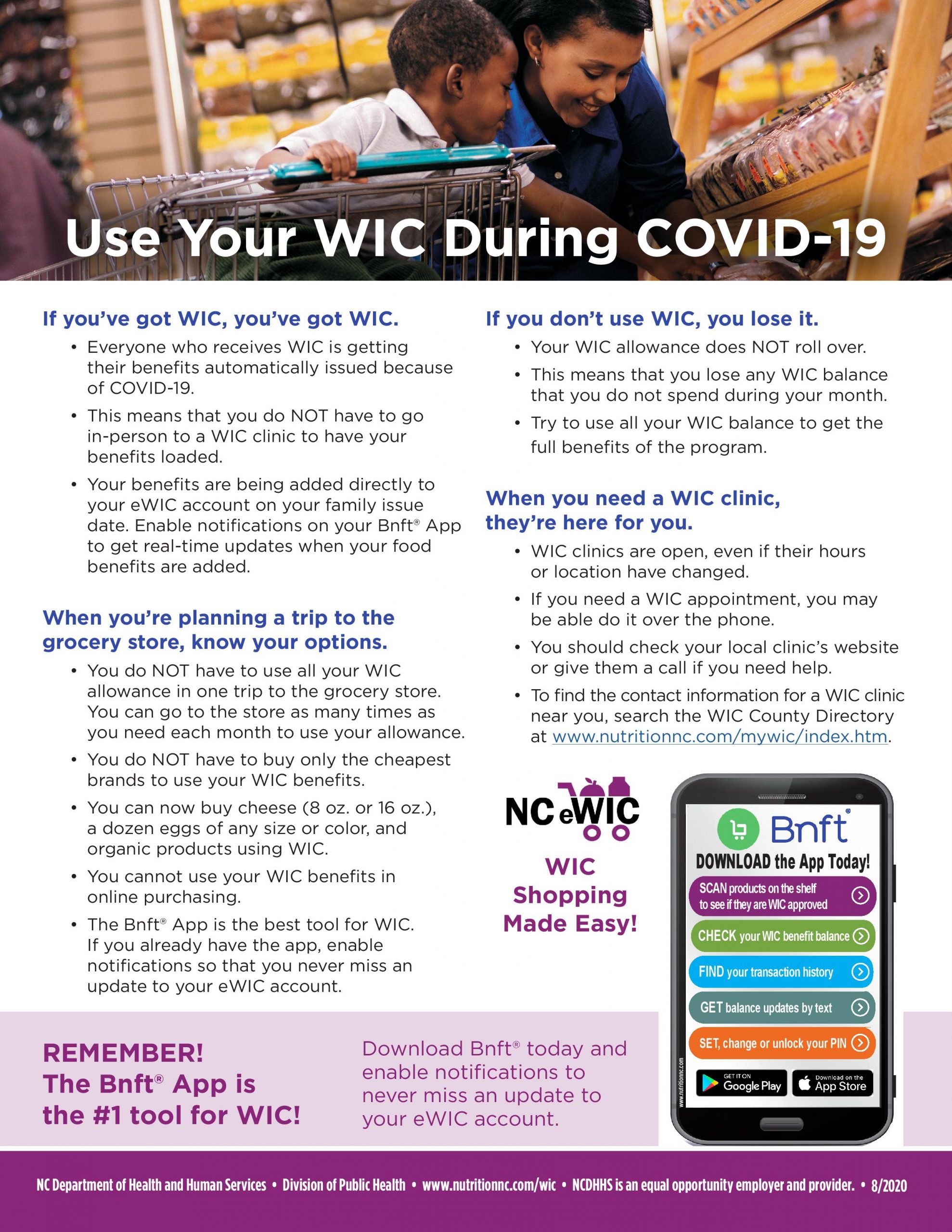

 We invite you to share this resource with your communities and direct anyone who has questions to contact their local WIC clinic directly.
We invite you to share this resource with your communities and direct anyone who has questions to contact their local WIC clinic directly.
5 Ways to Minimize Risk of Opioid Addiction: OpEd
The following article is an OpEd from Stephen Hill, Founder of Speak Sobriety.
Opioid Addiction and COVID19
The opioid epidemic has had a devastating effect on America, and now overdose deaths are surging within the current COVID-19 pandemic. People across the nation from all different walks of life are overdosing and dying every day, mostly from heroin laced with fentanyl.

5 Ways to Minimize Risk of Opioid Addiction
1) If you or a loved one undergoes a medical procedure and you are prescribed
opioid painkillers, ask the doctor if you can first try over-the-counter medications
such as Motrin or Extra Strength Tylenol before taking opioid painkillers.
2) If a doctor prescribes you or a loved one opioid painkillers, ask for the least
amount possible.The doctor can always prescribe more if need be.
3) Do not allow the person who is prescribed the opioid painkillers to be the one
who is holding the pill bottle. Have an adult—who does not have a history of
substance misuse—hold the pill bottle and check to make sure the pills are being
taken as prescribed.
4) If the pain has subsided enough to the point where you no longer need opioid
painkillers, immediately bring the pill bottle to your local police station or
pharmacy to be disposed of in a prescription dropbox.
(Click here for dropbox locations in the county)
5) After the pills have been disposed of, ask the person how the opioid painkillers
made them feel. If they liked the feeling, be sure to take extra precautions in the
future.
The truth is that the overwhelming majority of heroin addicts started out with prescription opioid painkillers, but moved on to the harder stuff once their habit became too expensive.

On the street, opioid painkillers can go for as much as $1 per milligram
The following is a message from stephen hill regarding his addiction process
At the height of my addiction, I had a 900 milligram per day Oxycodone habit. Simple math, my drug habit was $900 per day. This is why most opioid abusers make the switch from opioid painkillers (Vicodin, Percocet, OxyContin, etc.) to heroin, which is significantly cheaper and readily available, but also more dangerous.
Where did it all begin?
How did this happen to me? Nicotine, marijuana, and alcohol are the classic trifecta gateway drugs, and without a doubt my early exposure to these substances at the age of 13 made my brain more vulnerable to developing an addiction.
However, my opioid addiction started my senior year of high school when a friend of mine’s younger sister got her wisdom teeth pulled and was prescribed 30 Hydrocodone. 30! She was barely five feet tall and 100 pounds at most. She only took 2 out of the 30 painkillers prescribed, and my friends and I got our hands on the rest. That was the start, and before long, I was a full blown opioid addict.
I fully understand how lucky I am that I was able to overcome my addiction
after suffering for over 7 years addicted to opioids. I have lost many friends, both
from heroin and opioid painkiller overdoses, and the majority of them had their first
exposure to opioids after getting their wisdom teeth pulled or breaking an arm or
leg while playing sports.
You can never know if it is going to happen, or who it is
going to happen to, but there are some steps you can take in terms of prevention.
Stephen Hill stephen.hill@speaksobriety.com 845-323-1888 speaksobriety.com
If you, or someone you know, is directly impacted by prescription medication addiction please consider treatment.
You can use this link
https://findtreatment.samhsa.gov/
to find treatment centers in your area.
Review of July 16th Virtual Lunch and Learn: “This Place” Film
Underage Alcohol Use on the Rise Due to COVID19
There is data showing that off-premises retailers in North Carolina are selling record numbers of beer, wine and liquor. How does that translate to youth alcohol use?
Youth are home now more than ever and may be unsupervised.
Adult use rates of alcohol have been increasing state-wide.
The possibility of an increase in youth alcohol use is something that should be considered.

Did You Know: Before COVID19…
-
The #1 place youth got alcohol is from their own home.
-
Over 1,800 college students died from alcohol related injuries each year.
-
In the US alcohol kills more than all illegal drugs combined.
-
Teen girls rival teen boys with consumption rates of alcohol.
-
Every day 7,000 kids younger than 16 years old consume their first alcoholic drink.
-
Kids under 15 years old who consume alcohol are four times likely to end up alcohol dependant as an adult than if they waited until they were 21 years old for their first drink.
How can this be changed?
Parents and guardians can make a positive impact in their communities by doing a few things.
- Monitor and secure alcohol in the home.
- Purchasing in quantity is more cost effective but it is harder to keep up with 24 beers or a case of wine than it is a 6 pack or bottle.
- Only purchase what you will consume.
- Even if it costs a couple dollars more this tactic regarding alcohol storage will make less alcohol available for youth resulting in fewer youth consuming.
- Storing alcohol in cabinet or unmonitored areas of the home allows youth access.
- Keeping alcohol stored appropriately, like firearms and dangerous household chemicals, will keep youth from consuming alcohol.
- How youth see alcohol consumed in their environment determines their perception of alcohol.
- During events at the home (birthday parties, cookouts, holiday celebrations) make sure alcohol is not the focal point of the event.
- Don’t glamorize alcohol use.
- Show youth that a good time can be had without alcohol.
- Parents rationalizing youth use.
- Parent provided parties are not the answer.
- Parent provided parties are dangerous.
- Parent provided parties normalize alcohol use by youth.

On July 16th we hosted a virtual lunch and learn where the film “This Place” was shown.
Following the film was a discussion about underage alcohol use and how it impacts communities in Stokes County.
“This Place” is an award-winning, 15-minute film that dramatically captures today’s youth drinking culture. This film shows the alcohol-saturated environment kids are exposed to and the impact of underage drinking. It also offers an important glimpse into communities that are taking action to reduce alcohol problems.
If you are a parent/guardian, caregiver to youth, coach, teacher, community member, faith leader or are interested in creating positive change in your community this film will allow you to be better informed about underage alcohol use and introduce concepts to help decrease alcohol misuse in your community.


These national statistics provided by the Monitoring the Future Survey show the bigger picture of underage alcohol use. This may be a snapshot of the nationwide average but this is an issue that impacts Stokes County communities.


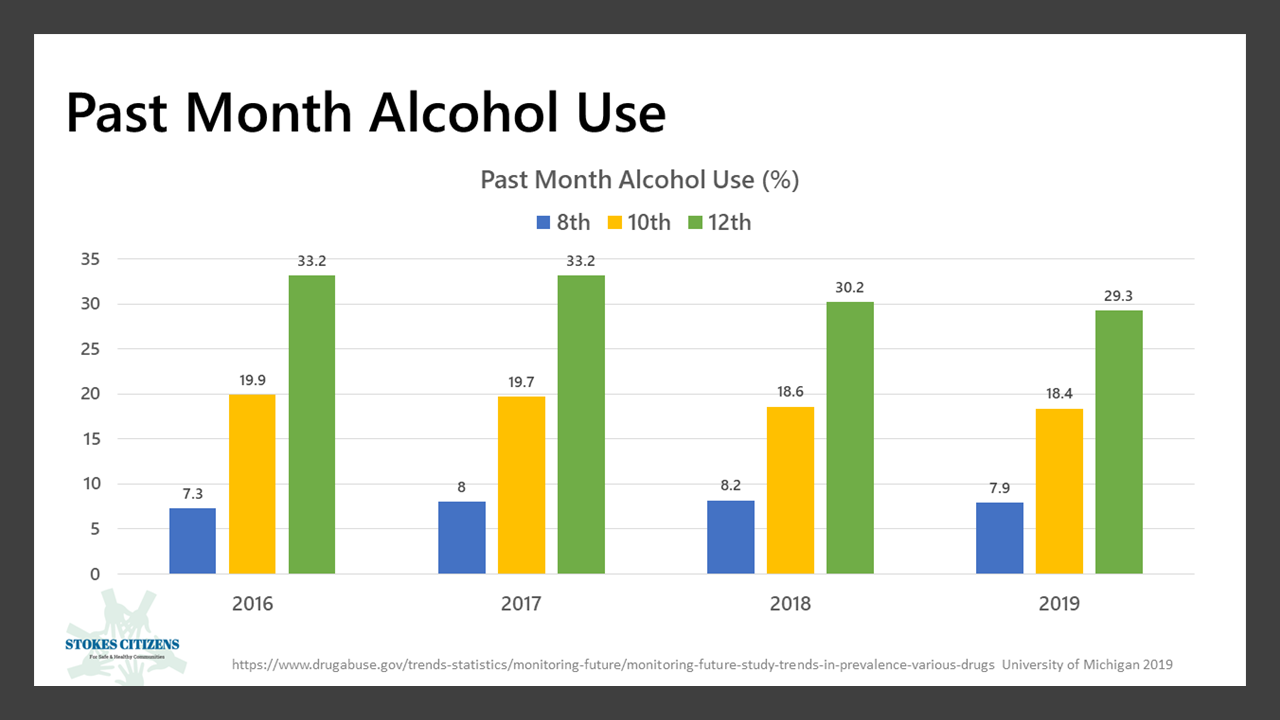

For more information on how you can make a positive impact in your community, reduce underage alcohol use or reduce adult alcohol misuse reach out to us. dvickers@insightnc.org or 336-287-2411
Stokes: Stay Home. Stay Safe. Save Lives. Walnut Cove Public Library
For our series of Local People, Local Stories, Local Impact, we spoke with Walnut Cove Library Branch Manager Christine Boles about their continued efforts to provide services for citizens in the area.

How has COVID19 affected Walnut Cove Library?
“When we closed on Friday, March 27, 2020, we closed our doors to the public until further notice. Closing the library that Friday afternoon was a surreal experience and one that left me feeling very confused as to how we would handle this new way of life and work.”
Christine thought, “how would we still meet our community’s needs and what about all the people who call Walnut Cove Public Library their “home away from home?”
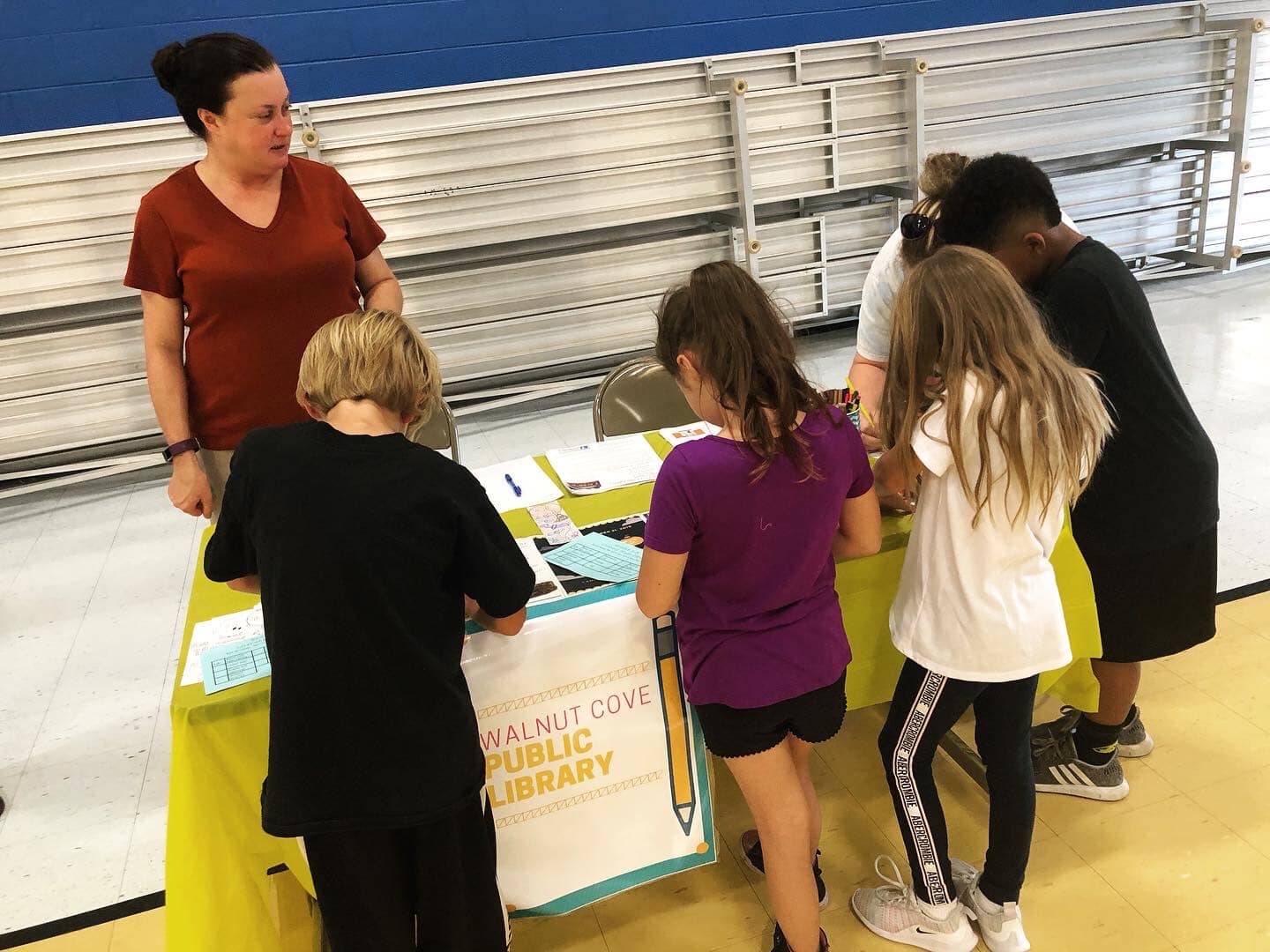
“Walnut Cove Public Library is like many small-town libraries when it comes to family. We have many patrons we consider family to us and we are just as concerned about them as we would be our own families. Working in a small-town library allows us to really get to know people and what is happening in their lives. So many of our patrons have used the library since they were small children and now we see their children using the library. Many of our senior citizens we see every week and we spend a great deal of time working with them to find new books for them to read.”
“Then, there are those few individuals like myself, Assistant Branch Manager Chelsea Russell, and Programs Assistant Kristin Fulp who grew up using the Walnut Cove Public Library and now work there.”

How will the Walnut Cove Library continue services?
We are making many plans for how we can best serve everyone during the summer months. Currently, the staff at Walnut Cove is working diligently on our Summer Learning Program.
We will still have a program for our children, but it will be different in many ways.
1: We will have both paper reading logs and an online recording site for our participants to record their reading time and we will still have prizes at the end of the summer.
The State Library of North Carolina is currently working on an online reading recording website that we will be able to share very soon.
2: We are working on printed and online packets to hand out and share with our participants. The library staff is deciding how to get those printed packets to everyone since we may not be able to open to the public for a while. We do not want to exclude anyone who does not have access to the internet.
3: Our performers will be doing online programs for us to share with all families. These programs will be available for everyone to view! Sadly, there will be no in-house programs this summer.
4: Also, we will be videoing science experiments, STEAM (Science, Technology, Engineering, the Arts and Mathematics) projects, and filming educational videos that our children can follow along at home.
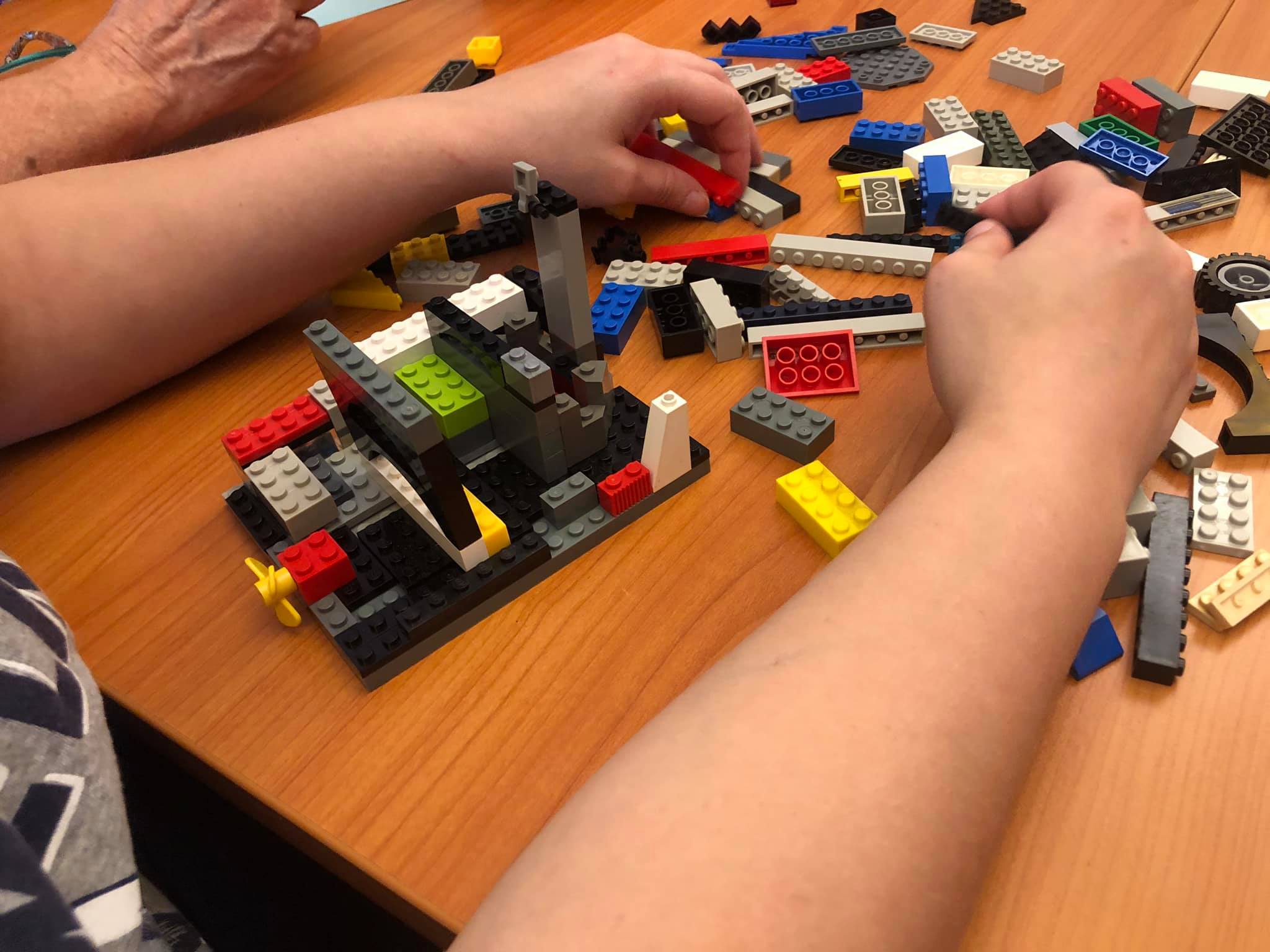

Christine says, “if you have any suggestions on how we can best serve your needs during Summer Learning, we would be happy to hear them.”
⇒You can reach the Walnut Cove Library on their Facebook page, via phone 336-591-7496 or by e-mail at wco@nwrl.org⇐
Another service we want to add this summer is our Back to Basics videos. This is a first for Walnut Cove and we are excited to add this to our services! We are planning to do several how-to videos for everyone.
We are currently working on fishing techniques, starting your own garden, and learning how to crochet.

These are staff hobbies, but we want to hear from our customers what they would like to learn.
We have several suggestions already including canning and preserving fruits and vegetables, sewing, and seasonal crafts.
Eventually, we plan to take our show on the road to visit businesses and places of interest in Stokes County.
“What is something positive, or uplifting, that you have experienced during COVID19?”
The most positive aspect taken from this whole experience is the library staff has an even greater understanding of how valuable our public libraries truly are to their community and how much our hard work and dedication will have to continue at an even higher level to help see our community through this pandemic. We know COVID19 will be a part of our lives for many months and possibly years to come and it has taught all of us the value of human life.
In addition, we think of what we must do as community helpers to keep our citizens happy, safe, and well-informed.
There is not a day goes by if I am out in Walnut Cove, that someone tells me how ready they are for the library to open back up. Everyone is in full agreement that they greatly miss our doors being open.


